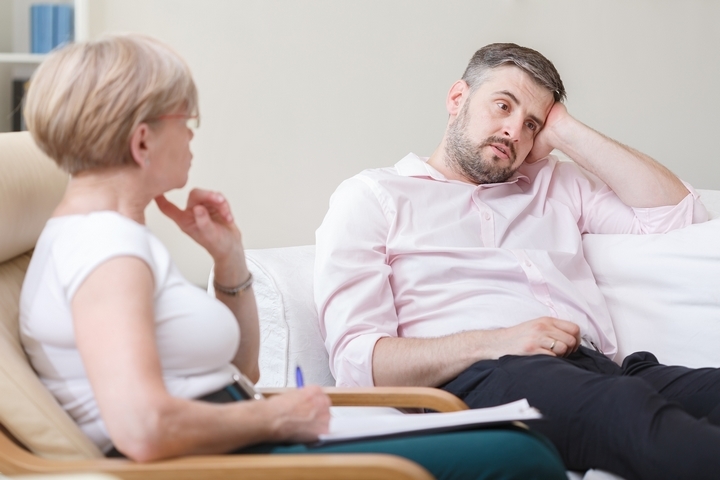PTSD Relapse Prevention Tips
Post-traumatic stress disorder relapse is something a lot of recovering individuals encounter. Even with treatment and support and the presence of friends and family, PTSD relapse is always a risk. An episode can feel overwhelming and difficult to counter or overcome. Fortunately, there are ways to drive down the risk of recurring episodes and an upsetting PTSD relapse.
If you are experiencing frightening symptoms of post-traumatic stress disorder or are currently participating in a related recovery program at a treatment center, here are some PTSD relapse prevention tips to keep you focused on your recovery and the positives.
Tip #1: Maintain a Relationship with a Treatment Center

Treatment centers offer access to a range of resources and tools that can help someone with PTSD battle back against the worst symptoms. If you haven’t started a PTSD recovery program, ask to. If you have completed one, maintain the relationship with your treatment center.
Ensure you follow up with any directives they give and continue to prioritize maintaining your recovery. If they haven’t given you directives, connect with a mental health professional who can support you as you continue to navigate through life.
Tip #2: Try Cognitive Behavioral Therapy for PTSD

Mindfulness and meditation are what many seek out as an at-home treatment in PTSD recovery. While mindfulness does offer value, it’s an exercise in observing and identifying feelings as they come. Cognitive behavioural therapy, or CBT, teaches a person to interrupt automatic thought processes to replace them with healthier responses.
CBT, guided by a professional or self-guided with a workbook, works to prevent falling into patterns of negative thinking, overwhelm, and uncontrollable PTSD symptoms.
Tip #3: Counter Your Negative Internal Thoughts

Eliminate negative self-talk. These are unreasonable, cynical, destructive, hurtful, manipulative, or avoidant thoughts. Replace them with positive thinking. You do this by thinking in specifics rather than generalizing. Focus on your own choices that you can control and not others’ intentions or actions.
Identify the positives in a given situation. Prioritize thinking up solutions to difficult problems rather than allowing them to fester. Focus on what is rather than what could be or what could have been.
Tip #4: Invest In Positive Activities For Yourself

Lots of people remove certain elements of PTSD from their lives in recovery but never replace those thoughts, emotions, and experiences with something positive. This replacement is important.
Consider what attracts you. It may be an activity or a hobby. It could mean a new group of friends. You may move to a new residence somewhere other than where you were living because of negative associations there. Find the path for yourself that leads you to somewhere positive.
Tip #5: Identify Your Comforts And Keep Yourself Safe
Find what comforts you and make it a point to include them in your daily patterns. It could be cuddling a pet, reading a book, listening to a certain type of music, watching a specific series, writing in a journal daily, or just curling up in a blanket with your partner.
Make sure you give yourself pleasurable experiences and tasks daily and engage in self-care for the soul. This is how you keep yourself happy and safe, and safety is most important when recovering from PTSD.
Tip #6: Set Short-Term and Long-Term Goals

A goal or an objective is something you can look forward to. It’s not looking into your past and isn’t keeping you rooted in the present. It could be something as simple as exercising for twenty minutes daily or showering in the morning. If you need to, start small.
Set a time frame to achieve your goal, and once it’s been achieved, make more goals. Rebuild your life with this progress. Every day, work towards achieving your goals and moving ahead, never back and never still.
Tip #7: Know When You Need to Ask for Help

You may believe yourself to be fully healed and recovered from PTSD, but some months later, early symptoms start to show up again. It may be avoidance attachment styles, such as isolating yourself from loved ones. It may be unhealthy coping, such as binge eating, self-harm, or substance abuse.
Recognize the early signs and when you need to ask for help. If you don’t ask, other relapse prevention methods are likely to fail, and you may find yourself suffering from PTSD symptoms again.
Tip #8: Recognize High-Risk Situations For Relapse

A high-risk situation for PTSD relapse is anything that may increase the likelihood of a relapse. It may be a specific person, an activity you used to find enjoyable, or a specific place. Identify for yourself what these high-risk situations and triggers are.
If you aren’t sure what they are, ask yourself what produces negative changes in emotions, behaviour, or attitude. Make a list. Those are the high-risk situations to avoid and manage.

